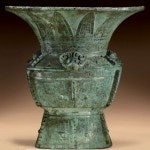Jing Daily’s Top Posts For The Week#
In case you missed them the first time around, here are some of Jing Daily’s top posts for the week of September 6-10:

Starting this week, New York audiences can get their Chinese contemporary art fix at the “Trans-Realism” art exhibition at Rockefeller Center (running from September 9-26), organized by China’s Center of International Cultural Exchange (CICE) and Christie’s auction house. This exhibition, which is designed to present a cross-section of the last 30 years of Chinese contemporary art, includes 29 paintings and photographs by 17 artists, such as Yang Feiyun, Xin Dongwang, Yu Hong and Qiu Xiaofei, who may not be as well known in the U.S. as Yue Minjun, Zhang Xiaogang or Liu Ye but are on the leading edge of their country’s art boom.
From China Daily:
“We chose artists less known in the West rather than going with big names,” says Pan Qing, the exhibition’s co-curator from the National Museum of China.
“Many of them are up-and-coming artists born in the 1970s, and one was born in the 1980s. Their approaches depart from those of their predecessors’,” Pan continues.

BMW M3 Tiger Limited Edition Roars Into China
With China surpassing the United States in 2009 to become the world’s largest auto market, and with luxury auto sales (and traffic jams) there increasing dramatically over the past year, we’ve seen some of the world’s top high-end automakers pulling out all the stops to appeal to China’s wealthy elite. From special China-only models by Rolls-Royce to one-off artist collaborations by Ferrari to special elongated models by nearly every major carmaker worth its salt, the mantra in the China auto market seems to be, “if you build it, stamp ‘China Limited Edition’ on it and jack up the price, they will come.”
Apparently, BMW has heard this loud and clear, as the company recently announced it was going a step further than just producing more typical elongated sedans, and will release a very limited (only 30 produced) edition, China-only M3 Tiger — so named because 2010 is, in the Chinese lunar calendar, the year of the tiger — in celebration of the 25th anniversary of the M3’s entrance to the China market.

Look For Patriotic New Collectors To Loom Large At NY Asian Art Week
Asian Art Week is soon to hit New York City, and with the increased activity seen in the auction world over the past 18 months among new collectors from emerging countries like China, India, Indonesia and elsewhere, these collectors — who are often motivated as much by patriotism as the smell of money — should loom large at some of the upcoming sales.
As Jing Daily has noted on numerous occasions, new Chinese collectors have burst onto the auction scene in recent years, mainly in mainland China and Hong Kong but also in London, New York and Paris on occasion, looking to snap up contemporary and traditional art, jade and jewelry, watches, wine and antiques — virtually all of it, with the exception of the wine and watches, originally from China.
Following the onset of the global financial crisis, when many western collectors held back at auctions of Chinese art and antiques, these new Chinese collectors were able to get their hands on top-quality pieces at once unimaginable prices. Even now that many western and Japanese collectors are back on the auction scene, paddles in hand, Chinese collectors have proven that they’re willing to spend outlandish amounts for lots from particular artists or particular historical eras. According to the AFP, at Asian Art Week — which kicks off in New York next week — we can expect to see Asian collectors who are “rediscovering their roots” play a major role.

Do Savile Row Suitmakers Really Want To Be Seen As “Coal Boss” Brands In China?
This week, Bloomberg reported that Trinity Ltd., which owns the China retail rights for brands like Cerruti 1881, Intermezzo, and Savile Row suitmaker Gieves & Hawkes, plans to open at least 50 more store locations in smaller cities throughout China in order to tap the growing demand from newly rich coal mine and factory owners in the country’s interior. According to Managing Director Sunny Wong Yat Ming, the planned store openings would boost Trinity’s locations to more than 500 outlets throughout Greater China by 2011. The planned expansion is currently aimed at areas like Inner Mongolia, where Trinity plans to open 17 stores, and Zhoushan in eastern Zhejiang province.
From Bloomberg:
As of June 30, almost 70 percent of Trinity’s stores were outside China’s so-called first-tier cities, which include Beijing and Shanghai, according to a company financial statement. The company’s first-half sales climbed 20 percent from a year earlier to HK$925 million.

Modern Painters September 2010: A Special China Issue
The current issue of Modern Painters magazine turns the spotlight on contemporary Chinese art, ramping up the start of the fall art season with a close look at emerging and established Chinese artists and the evolving Chinese art scene.
While many art magazines have run multiple features on contemporary Chinese art and artists—notably Art in America in June/July 2004—the September Modern Painters is the first major magazine in recent years to devote an entire issue on the subject.
The reasoning behind the issue’s focus is clear. In the past few years, Chinese contemporary art has become an increasingly important part of the global art scene, with Chinese contemporary artists appearing in high-profile museum exhibitions and frequently breaking sales records at auction. With confidence in the Chinese contemporary art market gaining ground lost in the aftermath of the global financial crisis, and artists there experimenting more with style, form and mediums, we’re seeing an explosion of creativity not only in traditional art hubs like Beijing, but also in Shanghai and smaller cities like Wuhan or Kunming.